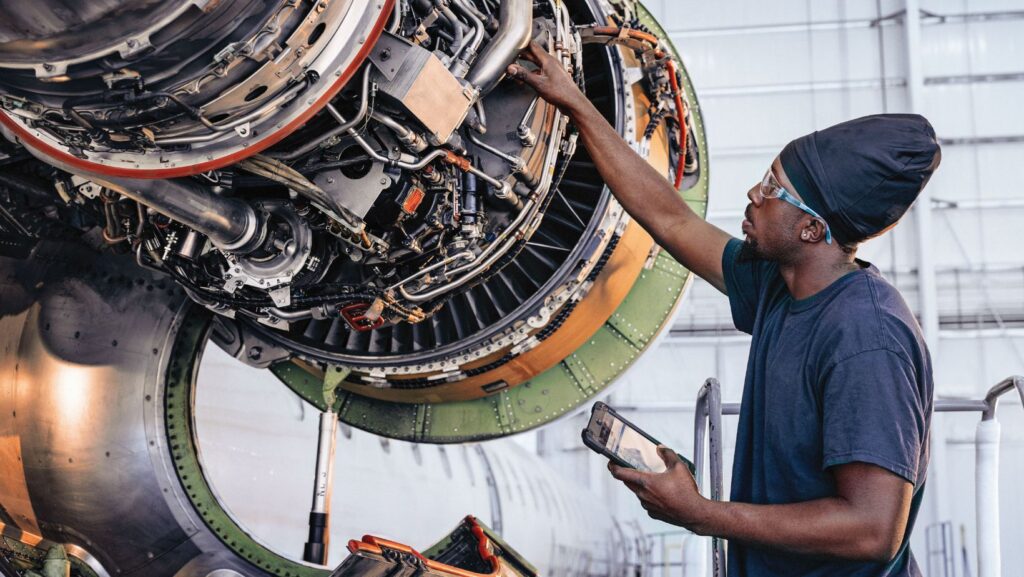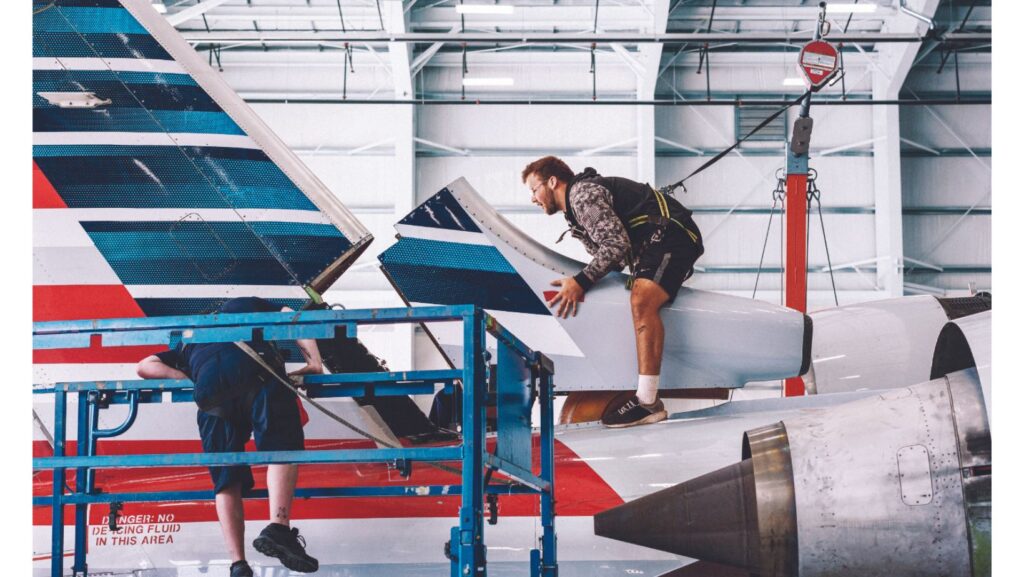Supporting a diverse and skilled AMT workforce
For MRO Management, Jennifer Iversen, vice president of aviation operations and regulatory affairs from the Regional Airline Association (RAA), highlights the crucial need to recruit diverse, skilled aircraft technicians to support the ongoing success and trust in regional airline operations.
There are more people flying today than ever before, following the rebound that has been experienced after the Covid-19 pandemic. While airlines compete over everything from which class you can sit in to whether you can bring your carry on onto the aircraft, there is one key area that airlines do not compete in, which is safety.
Safety is paramount
When it comes to the safety of the industry and the people we serve, we cooperate as an industry, sharing best practices and utilising them to ensure we operate with no compromises to the safety and wellbeing of the flight crew, passengers and aircraft.
Safety is paramount to the overall success of the aviation industry. With recent safety incidents related to maintenance capturing national attention, it has never been more important to uphold the travelling public’s confidence that the airlines and aircraft manufacturers are not only adhering to the minimum Federal Aviation Administration (FAA) regulations but are going beyond when prudent to ensure only airworthy aircraft are returned from maintenance for flight. The critical ground staff that support the safety underpinning of the industry starts with trained aircraft mechanics who ensure aircraft fleets are maintained to safeguard airworthiness.
The job of the aircraft mechanic is technical and requires strict adherence to safety regulations of the FAA, applicable guidance documents from organisations such as the International Civil Aviation Organization (ICAO) as well as airline company specific standards. Aircraft maintenance technicians (AMTs) are vital personnel at every airline in ensuring the safety and reliability of each aircraft.
This article continues after the below picture…

Earn as you learn
Regional airlines are often an entry point for candidates entering their careers after training, but also provide a stable opportunity for experienced technicians. The Regional Airline Association (RAA) has members that lead in maintenance ‘earn as you learn’ programmes.
To name just a few of our members’ initiatives: Republic Airways has an apprenticeship programme in partnership with the US Department of Labor to earn as they learn over a 36-month period and upon completion will be ready to begin a career as an AMT; Cape Air has partnered with Cape Cod Community College in Massachusetts investing in a 24-month airplane maintenance training programme to help meet the need for highly skilled technicians training them to full FAA certification; and CommuteAir has an assisted funding programme for airframe and powerplant licenses for mechanics.
The pay for these professionals starts around $70,000 and increases quickly with experience. Like the workforce for many careers, technicians are looking for opportunities to pursue their profession where they choose to live. Many technicians stay because the workforce is seniority-based, the quality of life enjoyed with seniority at a regional airline is attractive, and employees prefer it to avoid starting over with less-preferred work shifts. Some regional airlines have agreements with their major airline partners which allow technicians to further their career opportunities in a planned flow programme. While the staffing numbers are somewhat stable right now, industry trends can turn quickly.
Regional airlines, major roles
The safety foundation applies to regional and major carriers equally, ensuring one level of safety throughout the industry.
The RAA has 16 member airlines, who provide small communities throughout North America with access to the National Airspace System, partnering with major US carriers.
While most regional airlines do not sell their own tickets, they do have their own operating certificates and their own employees. These carriers also maintain their aircraft.
Regional airlines and their employee partners play a pivotal role to airline travel, often providing the only viable transportation link for the small communities they operate into, taking small community airport passengers to the hubs, where they can connect to their final destinations.
“We have a strong workforce at Horizon and are not currently experiencing significant attrition,” explains Baron Converse, managing director of maintenance operations at Horizon Air. “Our maintenance bases are located in smaller towns where people want to build their lives and careers. We pride ourselves on being embedded in these towns and employees living within the communities we’re serving.”
Recruiting strategies
Increasingly, recruiting efforts are capitalising on the beauty and quality of life available at the communities served. For example, RAA Associate Member MHIRJ has launched a talent attraction initiative called ‘Live Your Best Life in Tucson’, focusing a national campaign on the benefits of living and working at MHIRJ in Southern Arizona, partnering with local civic leaders to showcase the investment of high-wage jobs in vibrant, local communities. The company is making similar investments in Bridgeport, West Virginia, where the beautiful country, a paradise for those who love the outdoors, provides for an organic recruiting strategy.
Aircraft mechanics help provide the superior flight experience that airlines strive to provide to their customer base, beginning on the ground before the passengers and crew ever see the aircraft for their trip.
Innovative strategies seek to support and strengthen this workforce amidst broad concern that there will not be enough mechanics to maintain airplanes with the growing fleet plans of many airlines coupled with the anticipated workforce attrition and retirements.
According to Oliver Wyman’s Global Fleet and MRO Forecast 2022-2032, “By 2027 – projected to be the worst year for the shortage – the bleakest scenario has the supply deficit at more than 48,000 aircraft maintenance workers, or a shortfall of about 27 per cent.”
Additionally, new aviation entrants such as drones and eVTOLs are entering the system. These new aircraft types will require an A&P to perform maintenance and require specialised knowledge and skill to understand the unique designs and for many different battery powered technologies. As these aircraft become certified and included in the national airspace system, more maintenance staff will be needed to maintain them.
The growing workforce concerns are not new; the aviation industry has already been working to address the workforce of skilled technicians to sustain the workforce into the future.
In the 2018 FAA Reauthorization Act, section 625, Congress addressed the projected shortages of aviation maintenance technical workers in the aviation industry by giving the FAA the authority to establish an Aviation Workforce Development Grant Program for aviation maintenance technical workers. Congress approved the programme through the end of fiscal year 2023. The RAA supports additional funding to the workforce development for the maintenance grant programmes.
“These workforce development programmes for both skilled technicians and pilots are essential for a healthy and thriving regional airline industry,” says Drew Jacoby Lemos, vice president of government and external affairs for the RAA.
This article continues after the below picture…

Being more appealing
Like most skilled labour, workforce pipelines must be tracked and followed because it takes a minimum of 18‑24 months for a student to become an FAA-certificated airframe and powerplant (A&P) mechanic.
Another enormous problem facing much of aviation is the lack of diversity in the technician workforce.
According to the 2021 Bureau of Labor and Statistics (BLS) data, just three per cent of aircraft maintainers were women, six per cent were Black, four per cent were Asian, and 15 per cent Hispanic.
There is a need to provide more outreach to a younger more diverse and under-represented population, beginning as soon as middle school to ensure there is a wide net of interested candidates pursuing the career pathway into the future.
Aircraft maintenance education is an area where the industry is enhancing training, recognising that younger workers learn differently. Airline carriers are incorporating AI and VR so that training can maximise human capabilities while appealing to the next generation of workers.
In addition, the FAA has improved regulations in Part 147 that allow for harmonisation and advanced avionics, incorporating new innovations and technologies.
Trust in technicians
In an industry where people’s lives are dependent on the work, attention to detail, meticulous record keeping, regulatory compliance and meeting certification standards, AMTs play a critical role in the safety of the airlines and passengers. The work these key individuals do is literally a hands-on job. Dexterity and deftness are essential for their tasks of pulling things apart and putting them back together again.
There are 570 small community airports in the US and air service provided by the regional airlines to these airports generates $134 billion of economic activity in respect to those communities.
Furthermore, regional airlines represent 35 per cent of all scheduled passenger departures and provide the only source of scheduled, commercial air service to 64 per cent of US airports.
Beyond the numbers, it is about the safety and trust we have for aircraft mechanics. These essential personnel ensure that when an aircraft is taxied to the gate prior to flight, it has been inspected and is deemed airworthy. These professionals are key players to ensuring the safety of the industry.
The RAA will continue to advance meaningful solutions to reduce workforce shortages, not only as an advocate for the industry and its varied members, but also for the communities we serve.
The RAA brings together many of the suppliers and users in the MRO community at our Leaders Conference, and we invite you to join us in Washington DC in September to discuss solutions and innovations to enhancing maintenance safety programmes. Find out more at raa.org/events/2024-raa-leaders-conference.
This feature was first published in MRO Management – March 2024. To read the magazine in full, click here.
DID YOU KNOW…
Aviation Business News (ABN) is highlighting the staffing crisis in aviation this year with our Best Places To Work In Aviation awards which will celebrate those companies that are successfully driving new talent into the sector and retaining valuable skilled staff.
The deadline for firms to enter is June 7. Click here to register.
